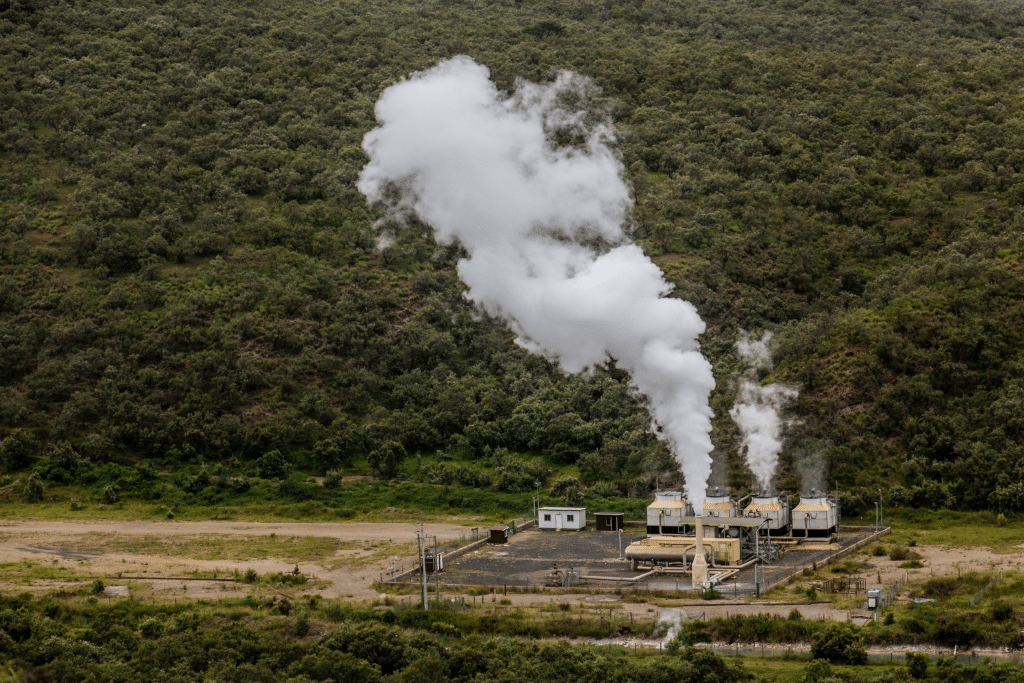As Kenya looks to increase its renewable energy production capacity, the Japanese company Toshiba Energy Systems & Solutions Corporation (Toshiba ESS) has been awarded the contract to equip the Olkaria I power station. This is Kenya’s very first geothermal power station, in operation since 1981 and owned by the Kenya Electricity Generating Company (KenGen), an electricity producer majority-owned (70%) by the Kenyan government.
“Units 1 to 3 of the plant need to be renovated due to their ageing”, says Toshiba. The order placed by SEPCOIII Electric Power Construction, the Chinese contractor for the refurbishment project, covers the supply of steam turbines and generators to equip Olkaria I’s 45 MWe units 1 to 3.
Read also- KENYA: the AfDB, TDB and Finnfund raise $117 million for geothermal energy in Menengai
According to Toshiba, the turbines will be delivered to the Rift Valley in western Kenya by December 2025. The refurbishment will increase the output of units 1 to 3 from the current 15 MWe (installed at the time by Japanese manufacturer Mitsubishi) to 21 MWe each, enabling them to achieve higher output with less steam. After installation, Toshiba will be responsible for operation and maintenance (O&M), in accordance with an agreement signed in 2022 with KenGen.
But who will finance the work? Certainly KenGen, the owner of Olkaria I. In 2016, the Kenyan central government signed a loan of 9.53 billion Kenyan shillings ($95 million) with the Japan International Cooperation Agency (JICA). The choice of Toshiba perhaps confirms this financing agreement and Japan’s now stated desire to invest in geothermal energy in the Rift Valley, which stretches from Kenya to Ethiopia via Uganda and Zambia. Experts estimate the region’s geothermal potential at 9,000 MW in Kenya alone.
Jean Marie Takouleu
